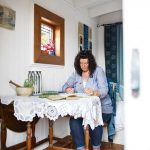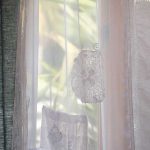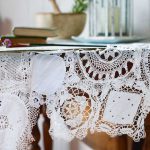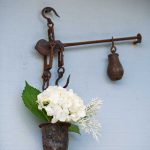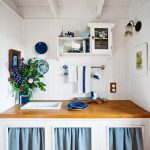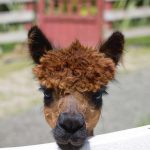How a wonky kennel inspired a one-of-a-kind shepherd’s hut
- Renée inherited her artistic side from her father and her practical side from her grandparents, who were dairy farmers in Taranaki.
- The curtains and tablecloth in the hut are adorned with lace doilies made by Renée’s nana.
- The curtains and tablecloth in the hut are adorned with lace doilies made by Renée’s nana.
- A hydrangea sits in an old cast iron glue pot hanging from an antique balance scale.
- The bench, on which Renée dyes her textiles, is from an old chestnut tree gifted by Renée’s brother who is an arborist. The hut holds a collection of treasures including a 15th century Chinese plate (on the wall) passed down from Renée’s father. The lead glass cabinet is also a family heirloom. The wooden frame includes a katazome stencil made by Renée in Japan.
- The couple’s five alpacas all have botanical names: Bracken, Thistle, Holly, Teasel and Bramble. “They’re our fluffy lawn mowers,” says Rénee.
Dogged determination helps restore the DIY mana of a west Auckland pastry chef, and creates the ultimate city retreat.
Words: Emma Rawson Photos: Tessa Chrisp
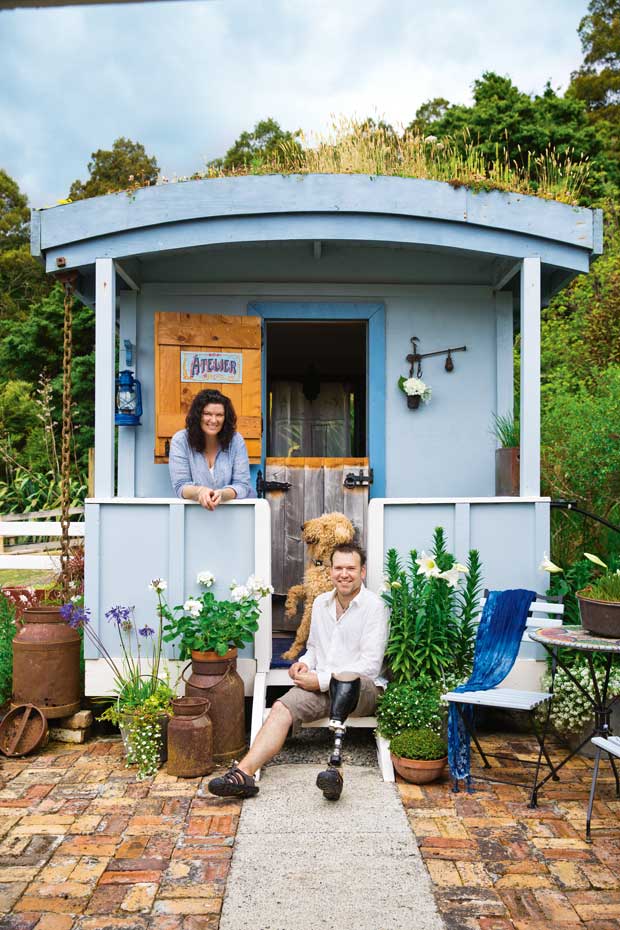
When a wonky kennel sent Clinton Davies to the marital dog box, his wife Renée set a test. Before they were married Renée had proven her ability with the hammer when building Violet Hill Farm Cottage by herself on a cow-trodden slice of a Kaukapakapa dairy farm. Clinton, a fine-dining pastry chef by trade, had deft hands when it came to a pain au chocolat but his first DIY effort was questionable. The kennel wasn’t level and the board and batten didn’t line up. “It was just dodgy,” says Renée.
So landscape architect lecturer Renée channeled her day job and set Clinton an exam. Task: build a traditional-style shepherd’s hut scaled down to 10 square metres (the maximum size for a sleepout before a building permit is required). Time allowance: two weeks. Bonus marks for incorporating Renée’s living roof design into the build. If he passed the test, Clinton was allowed to build the extension on the couple’s main house later that year.
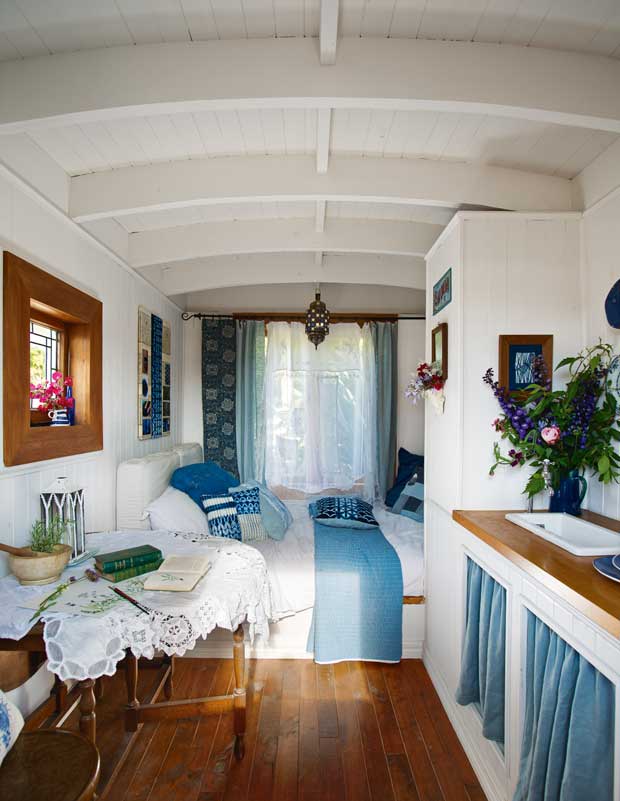
“She had been asking for a shepherd’s hut and I knew if I didn’t do it, she’d build it herself. If Renée sets her mind to something it gets done. So I accepted the challenge,” says Clinton. Clinton’s finished hut got Renée’s tick of approval. Built from ply and upcycled bits and bobs, it is inspired by the traditional shepherd dwellings used by European farmers during lambing season. A tractor’s snig chain is used as a rain chain (an alternative to a downspout); a retired totara telephone pole forms the garden bed outside and a old copper toilet system makes a pretty pot for salvias.
The couple’s five pet alpacas have been known to stick their heads through the rimu window, reclaimed from an old woodshed. “I like upcycling and the challenge of finding a second life for something,” says Renée. Adding challenge to the build was the fact that Clinton constructed the whole thing on one leg. He lost his left leg below the knee after a go-karting accident in 2006 and wears a prosthetic limb. Climbing ladders is tricky and putting extra weight on the artificial limb during heavy construction can cause problems (he recently shattered his carbon fibre leg building a fence), but otherwise it doesn’t set him back.
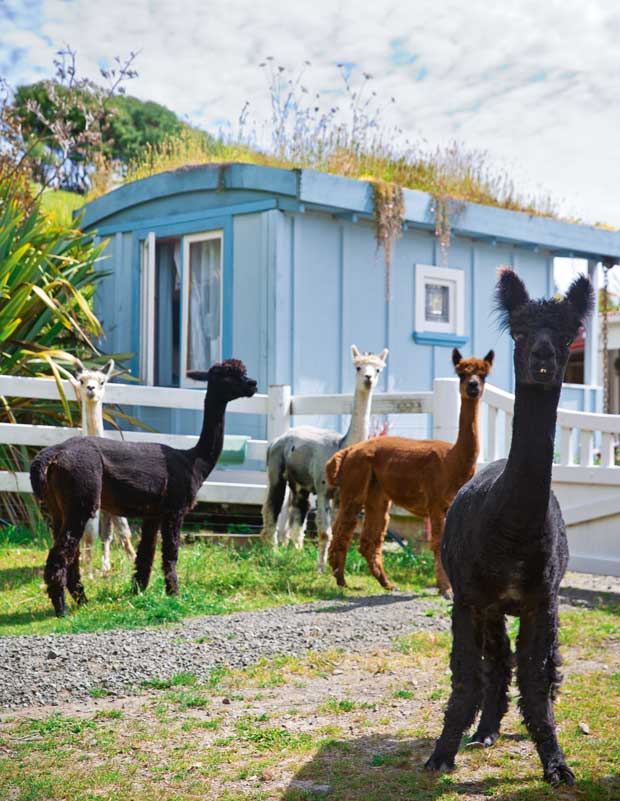
“Some days it is a bit hard but I just try to get on with it. I need to be fast enough to keep up with Renée.”
He says when he and his 70-year-old father-in-law were building the couple’s main house, the consent officials thought they were hilarious. “I think they popped by just to gawk at the one-legged man and an old mathematician walking around the building site.”
Violet Hill is just over an hour’s drive west from the Auckland CBD and the couple have many towny friends wanting a spell in the country. Guests fight for the last piece of Clinton’s tarte tartin, cooked in a wood-fired pizza oven that overlooks the orchard (150 fruit trees last count), and there are squabbles over who gets to stay in the shepherd’s hut. Animals are also fond of it; bees buzz around several species of colourful sedums, tuis and fantails perch between the self-seeded native orchids.
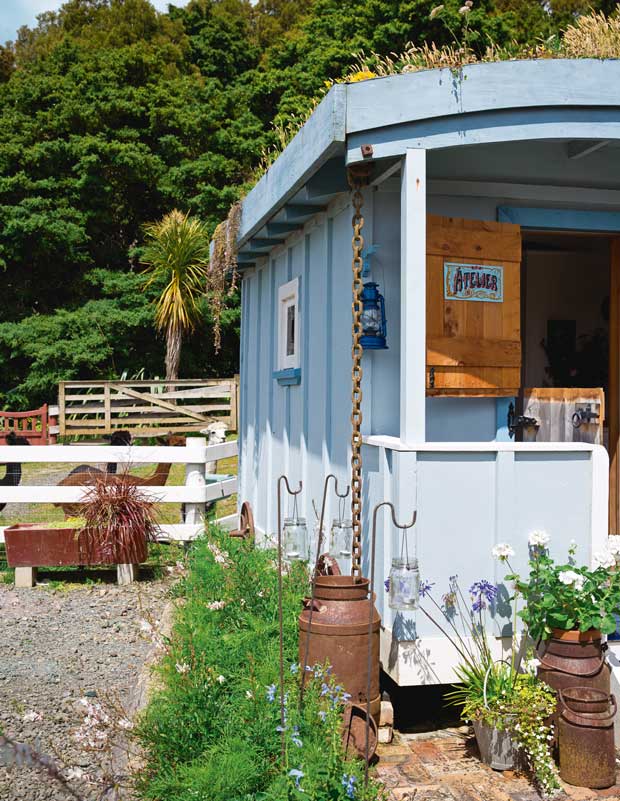
When it’s not used by guests, the space becomes Renée’s workshop for her hobbies – botanical illustrations and making natural dyes and herb-based products, all sourced from her organic pottager. Studying ecology and practicing ethnobotany (the study of plant use by humans) are a way to unwind after her demanding job as dean of engineering, construction and infrastructure at Auckland’s Unitec.
In November 2015 Renée followed her passion all the way to the mountains of rural Tokyo where she studied the traditional art of dyeing linen and cotton using the Japanese indigo plant from one of the few remaining natural indigo dyers in the world. The experience was the inspiration for the azure blue scheme in the shepherd’s hut. “There’s a movement of people wanting to connect to the natural origins of things,” she says. “Many of us want to understand where our food is grown and eat things that aren’t processed and understand what our clothes are made from.”
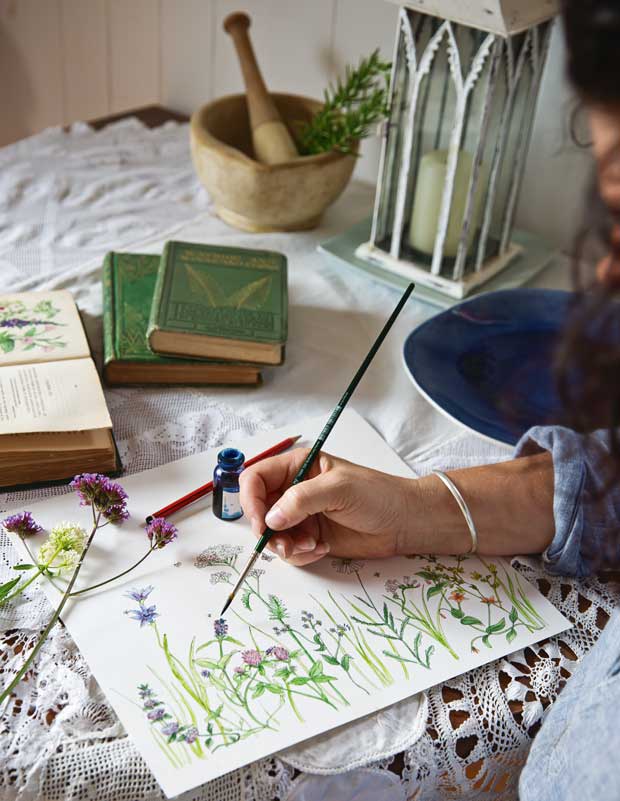
Green or living roofs are another area of study for Renée – she likes the idea of incorporating nature into a human living space. The green roof is an ecosystem and a place to observe a great amount of natural detail in a compact space. “I love watching a bumblebee feeding off a flower for instance. Observing the beauty of something that’s quite small helps put things in perspective. It’s easy to be overwhelmed with the largeness of everything. “For me gardens and ecology are a way to plug back into the rhythms of the natural world.”
RAISING THE ROOF
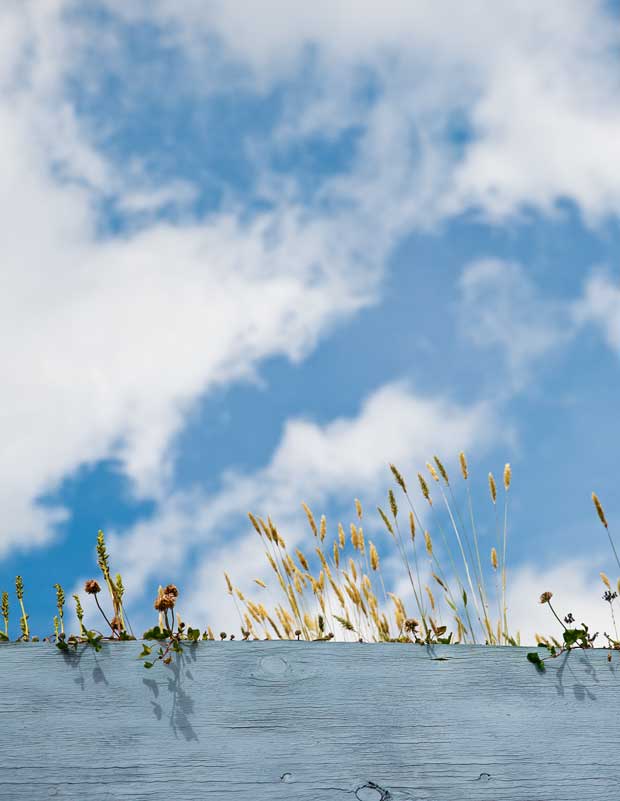
Green or living roofs are one of Renée’s areas of research. They are great for small spaces as they regulate the temperature – the soil provides insulation and the plants absorb 70 per cent of rain water (which increases the lifespan of a traditional roof). She also built a chicken coop with a living roof after reading a Swiss study that observed a 20 per cent increase in egg production from hens living in a coop with a green roof. She now has more eggs than she knows what to do with.
Neither of Renée’s green roofs have ever been watered and she lets weeds and grasses grow if they happen to seed. “I think it adds to the character. The grasses and weeds die off in summer and the sedums take over. The thing I love most is the native orchids. “Native orchids spring up on green roofs around New Zealand – there must be microscopic spores in the air and living roofs are the perfect environment for them.”
Living roofs need slightly more load-bearing support than a normal roof “but not as much as you might expect”. The basic structure involves a raised timber frame with built in drainage, lined with plastic. A light soil substrate such as coconut husk and pumice is laid on top and the roof is then covered with a small amount of soil and hardy, drought-tolerant plants. Living Roofs Aotearoa (livingroofs.org.nz) is a good website to visit for more information.
FOLLOW RENEE’S PLANS TO BUILD A LIVING ROOF CHICKEN COOP HERE
Love this story? Subscribe now!
 This article first appeared in NZ Life & Leisure Magazine.
This article first appeared in NZ Life & Leisure Magazine.
